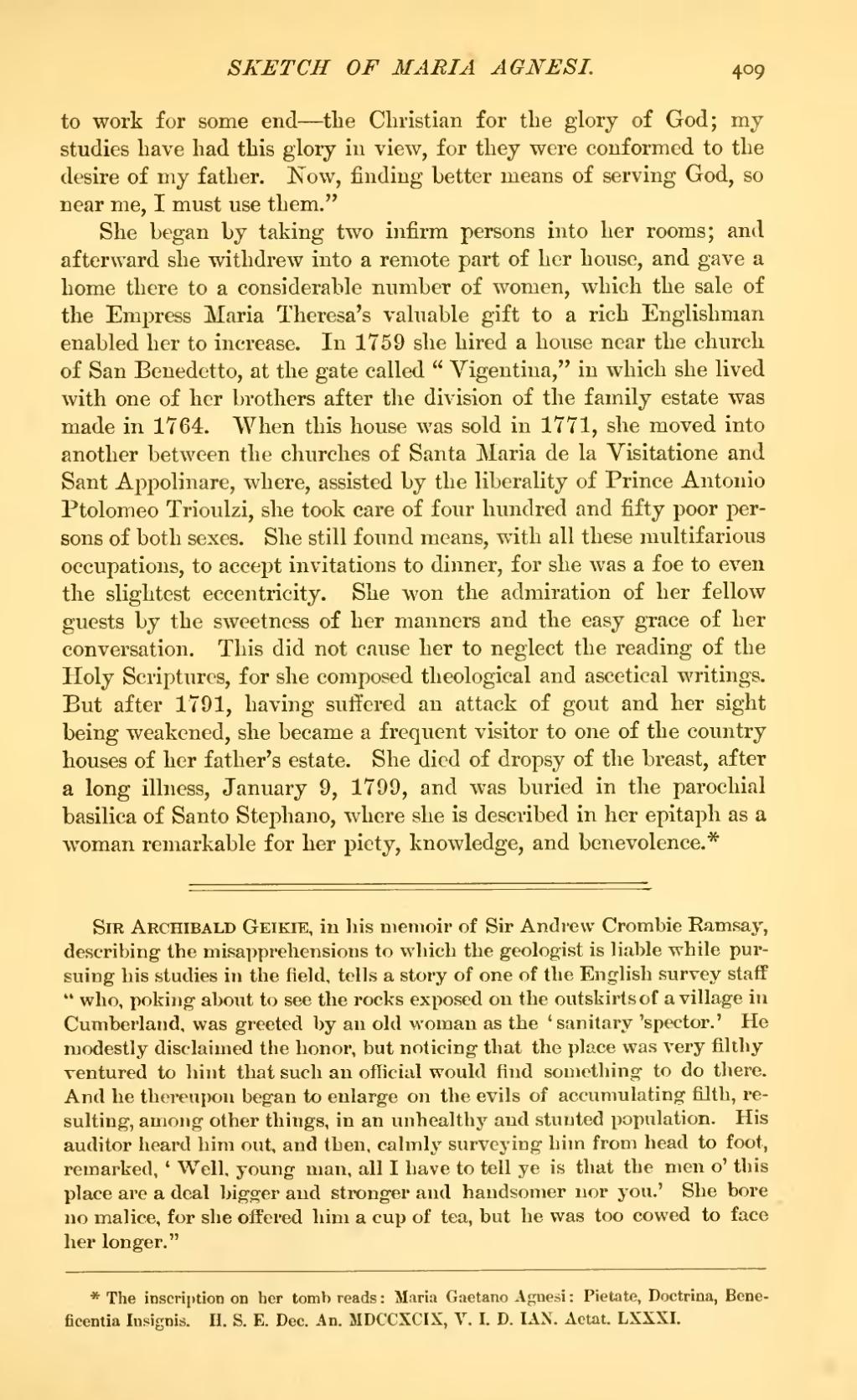to work for some end—the Christian for the glory of God; my studies have had this glory in view, for they were conformed to the desire of my father. Now, finding better means of serving God, so near me, I must use them."
She began by taking two infirm persons into her rooms; and afterward she withdrew into a remote part of her house, and gave a home there to a considerable number of women, which the sale of the Empress Maria Theresa's valuable gift to a rich Englishman enabled her to increase. In 1759 she hired a house near the church of San Benedetto, at the gate called "Vigentina," in which she lived with one of her brothers after the division of the family estate was made in 1764. When this house was sold in 1771, she moved into another between the churches of Santa Maria de la Visitatione and Sant Appolinare, where, assisted by the liberality of Prince Antonio Ptolomeo Trioulzi, she took care of four hundred and fifty poor persons of both sexes. She still found means, with all these multifarious occupations, to accept invitations to dinner, for she was a foe to even the slightest eccentricity. She won the admiration of her fellow guests by the sweetness of her manners and the easy grace of her conversation. This did not cause her to neglect the reading of the Holy Scriptures, for she composed theological and ascetical writings. But after 1791, having suffered an attack of gout and her sight being weakened, she became a frequent visitor to one of the country houses of her father's estate. She died of dropsy of the breast, after a long illness, January 9, 1799, and was buried in the parochial basilica of Santo Stephano, where she is described in her epitaph as a woman remarkable for her piety, knowledge, and benevolence.[1]
- ↑ The inscription on her tomb reads: Maria Gaetano Agnesi: Pietate, Doctrina, Beneficentia Insignis. H. S. E. Dec. An. MDCCXCIX, V. I. D. IAN. Aetat. LXXXI.

